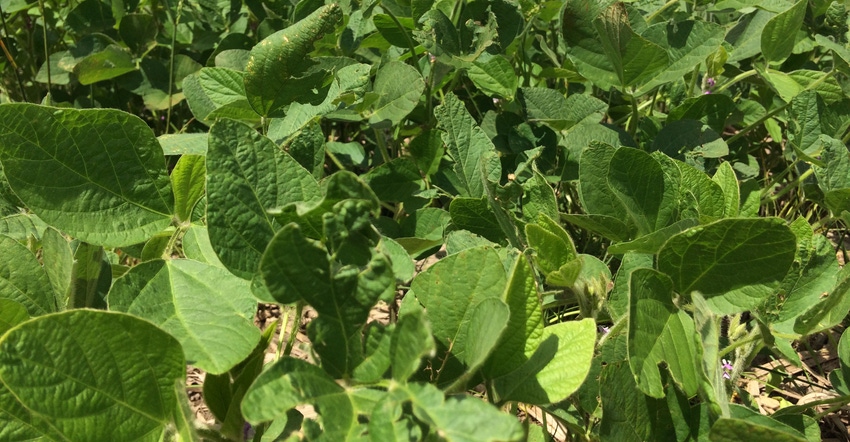
The latest USDA export inspection report, out Monday morning, showed a mixed but mostly positive batch of data. Soybeans proved to be the big winner for the week ending July 25 after Chinese buyers shipped out 22.1 million bushels of the 173 million in outstanding soybean sales they still had on the books, according to Farm Futures senior grain market analyst Bryce Knorr.
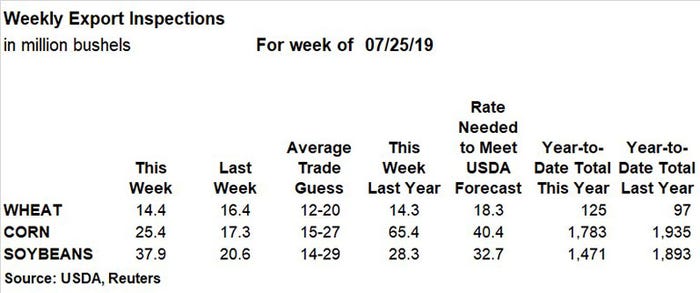
“That suggests that so far, they’re going along with previous commitments not to cancel the purchases outright, though some could be rolled to delivery in the 2019 marketing year that begins Sept. 1,” he says. “The total to all destinations of 37.9 million bushels beat the rate needed to ship every week through August to meet USDA’s forecast of 1.7 billion for the crop.”
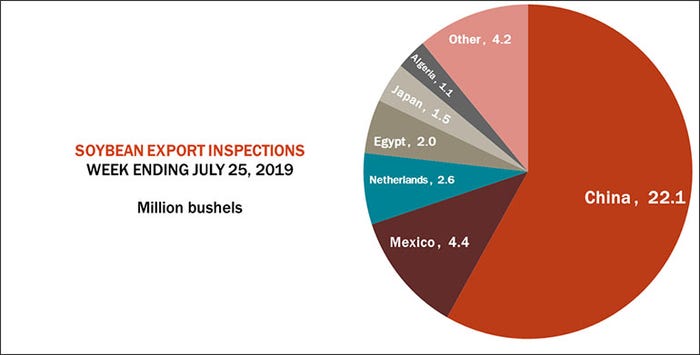
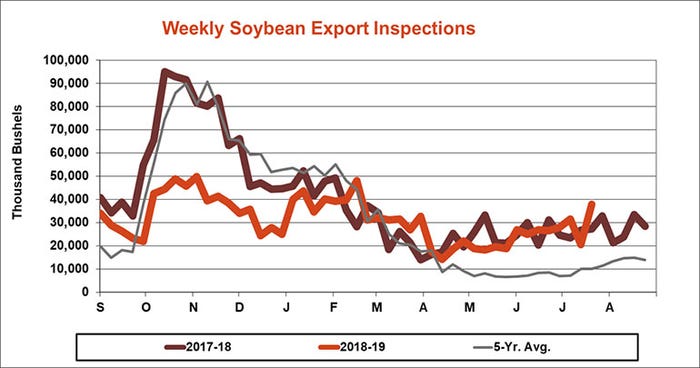
Total soybean export inspections reached 37.9 million bushels last week, nearly doubling the prior week’s tally of 20.6 million bushels and exceeding trade guesses that ranged between 14 million and 29 million bushels. The weekly rate needed to match USDA forecasts eased to 32.7 million bushels, while marketing year-to-date totals of 1.471 billion bushels remain 22% lower year-over-year.
China’s 22.1 million bushels led all destinations for U.S. soybean export inspections last week, but other top destinations included Mexico (4.4 million), the Netherlands (2.6 million), Egypt (2.0 million) and Japan (1.5 million).
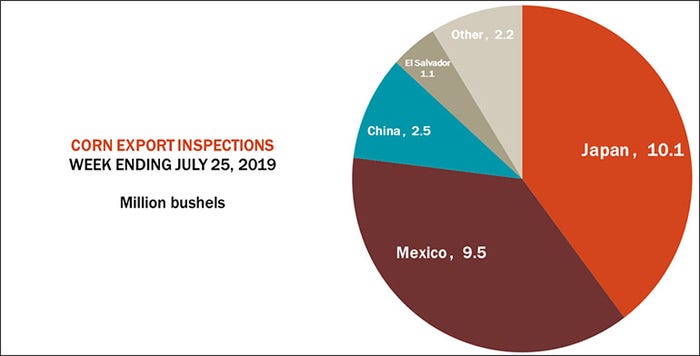

Corn export inspections also moved higher, with 25.4 million bushels versus the prior week’s tally of 17.3 million bushels – landing on the high end of trade estimates that ranged between 15 million and 27 million bushels. Still, the weekly rate needed to match USDA forecasts moved higher, to 40.4 million bushels. Cumulative totals for the 2018/19 marketing year are now at 1.783 billion bushels, which is 8% lower year-over-year.
“Corn numbers remain lackluster, but China made a little news here, too, taking a load shipped out of the Gulf,” Knorr says. “Mexico and Japan continue to dominate corn business, but South Korea hasn’t moved out or purchased much recently, turning to Brazil for supplies.”
Japan was the top destination for U.S. corn export inspections last week, with 10.1 million bushels. Other leading destinations included Mexico (9.5 million), China (2.5 million) and El Salvador (1.1 million).
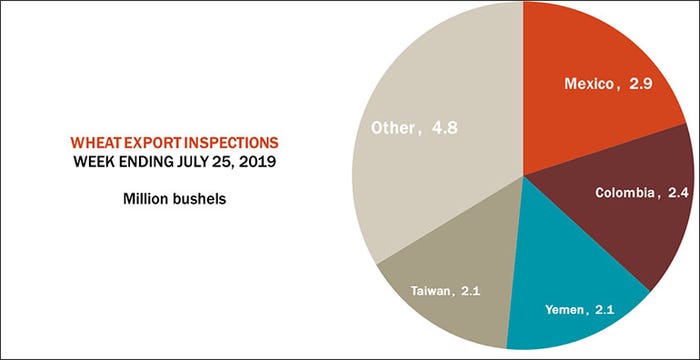
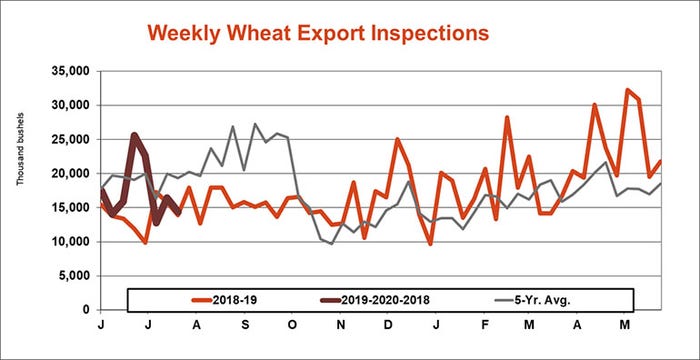
Wheat export inspections fell slightly week-over-week, moving from 16.4 million bushels down to 14.4 million bushels. That was also on the low end of trade guesses that ranged between 12 million and 20 million bushels, with the weekly rate needed to match USDA forecasts moving higher, to 18.3 million bushels. Still, the 2019/20 marketing year tally is 29% higher than a year ago, at 125 million bushels so far.
“Wheat inspections also remain sluggish, but that’s typical for July until new crop supplies get in position to be exported,” Knorr notes.
Mexico was the No. 1 destination for U.S. wheat export inspections last week, with 2.9 million bushels. Other top destinations included Colombia (2.4 million), Yemen (2.1 million) and Taiwan (2.1 million).
About the Author(s)
You May Also Like






